1. Predictive Soil Moisture Modeling
AI-driven irrigation uses predictive models to forecast soil moisture levels based on current sensor readings, soil characteristics, and weather forecasts. These models (often machine learning algorithms like neural networks or random forests) learn from historical moisture, weather, and irrigation data to estimate future soil water content. By predicting when soil will dry out or retain moisture, the system can schedule irrigation just in time for plant needs. This approach avoids fixed watering schedules, ensuring water is applied precisely when crops need it, which promotes water conservation and stable crop growth. Over time, predictive models become more accurate as they incorporate more data. A well-tuned model can maintain optimal soil moisture conditions, improving plant health and yields.

Recent research shows predictive soil-moisture models are highly effective. For example, a systematic review by Ivanova (2025) found dozens of AI-based forecasting systems that use sensor data (soil moisture, weather, irrigation history) to predict soil water levels. Many of these models achieve very high accuracy – some report R² values near 0.9 in test data – significantly outperforming simple fixed schedules. Such precise forecasting helps farmers irrigate only as needed; one review notes that modern forecasting tools “report precise accuracy for soil moisture prognosis”. In practice, fields managed with predictive AI models often use substantially less water while maintaining or increasing yields, demonstrating the benefit of data-driven moisture forecasting.
2. Machine Learning-Based Weather Forecast Integration
Modern irrigation systems integrate machine learning models with high-resolution weather forecasts to adjust watering schedules proactively. By ingesting forecast data (precipitation probability, temperature, humidity, solar radiation), AI models estimate crop evapotranspiration and soil water loss before they happen. This allows the system to reschedule irrigation – for example, delaying watering when rain is expected or adding extra water before a heat wave. The result is a more dynamic irrigation plan that responds to changing weather, reducing wasted water and preventing crop stress. This integration is typically done through neural nets or other ML algorithms that learn the relationship between weather patterns and crop water needs. Farmers using such systems can achieve more consistent plant growth, since irrigation adapts to upcoming conditions rather than relying on historical averages.
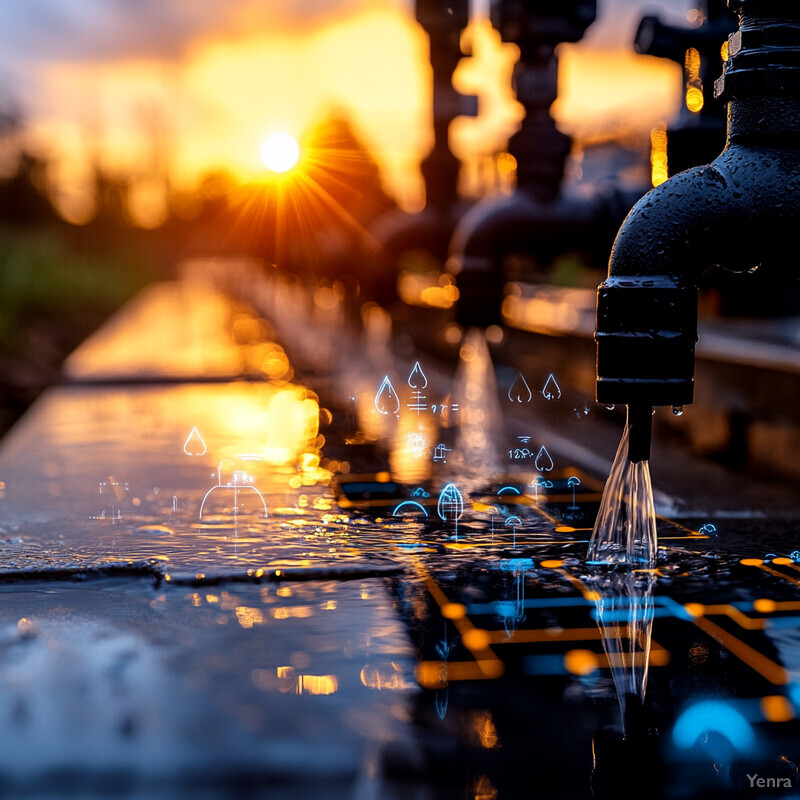
Integrating forecasts into irrigation yields large efficiency gains. For instance, Cai et al. (2023) developed a real-time scheduling tool driven by weather forecasts and field data; they reported that advanced forecasting-driven schedules could reduce irrigation needs by up to 48% and increase profits by about 20% compared to traditional fixed schedules. In that study, using near-term weather predictions in a simulation-optimization framework generated much lower water use with equal or better yields. In general, empirical studies have found that irrigation algorithms leveraging weather and climate forecasts consistently save significant water and maintain productivity. These results demonstrate that AI methods which interpret forecast information (radar, satellite, local climate models) can greatly improve irrigation decisions and resource efficiency.
3. Adaptive Scheduling Through Reinforcement Learning
Reinforcement learning (RL) applies a trial-and-error approach to irrigation scheduling. An RL agent repeatedly makes watering decisions (actions) and observes crop responses and resource use (rewards) over time. It starts with a basic policy and then continuously refines its strategy by exploring different irrigation patterns. Over multiple seasons or simulation runs, the system learns which watering actions maximize cumulative reward (e.g. profit or yield) under varying conditions. This adaptive process lets the system discover non-intuitive schedules that a fixed-rule approach might miss. As a result, RL can dynamically balance water savings against crop performance, automatically adjusting to soil moisture, weather, and plant feedback. In practice, RL-based irrigation controllers improve policies beyond static rules, evolving toward more efficient use of water and inputs.
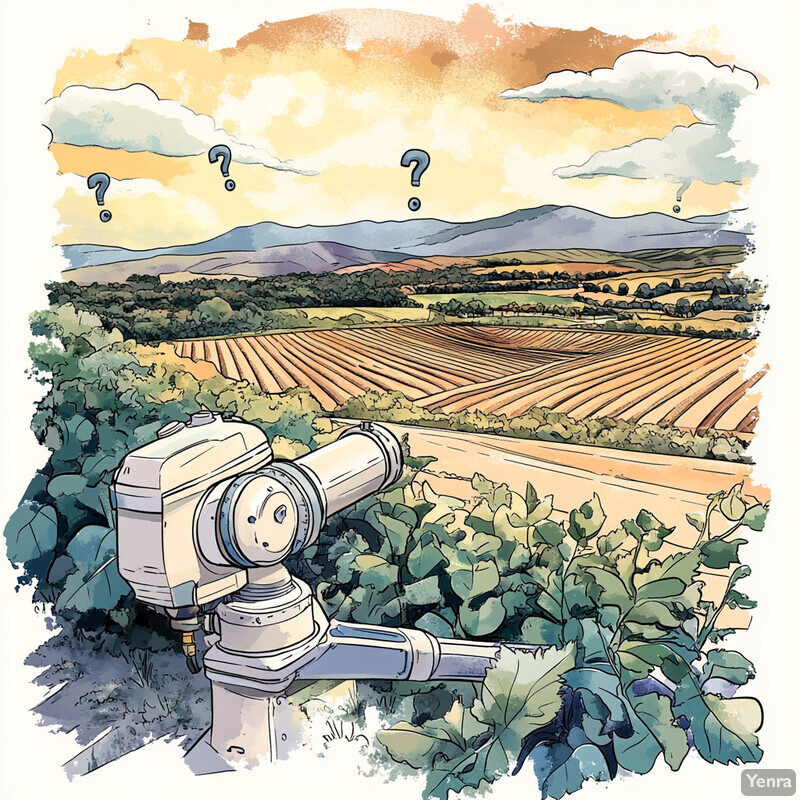
Reinforcement learning has shown strong benefits in irrigation. Saikai et al. (2023) demonstrated an RL framework for wheat irrigation where the learned policy consistently outperformed conventional rules. In a simulation of Australian wheat fields, the RL-derived schedule increased profits by up to 17% relative to the standard regional rule. The study notes that deep RL “has considerable potential to improve irrigation scheduling in many cropping systems” by adapting water applications based on feedback. In testing from 2011–2020, the AI-driven decision rule uniformly beat the benchmark each year, illustrating how adaptive learning can yield higher yields (and profits) with potentially less water. These case studies confirm that RL can significantly improve scheduling over time as it learns from experience.
4. Precision Integration With Soil and Plant Sensors
Precision irrigation leverages dense networks of sensors in the soil and on plants to tailor watering at a fine scale. Soil moisture probes at multiple depths measure water availability; plant sensors (leaf wetness, sap flow, canopy temperature) monitor plant stress signals. AI algorithms fuse this data to decide where and when to water. For example, if leaf temperature rises (indicating stress) or deep soil moisture is high, the system may skip or reduce irrigation. By integrating diverse measurements, the system can apply water sub-field or even plant-by-plant. This high-resolution approach ensures uniform growth and avoids local overwatering or dryness. It also prevents nutrient leaching and root diseases by avoiding excess water. The use of combined sensor inputs enables truly site-specific irrigation schedules that respond to real-time plant and soil conditions.
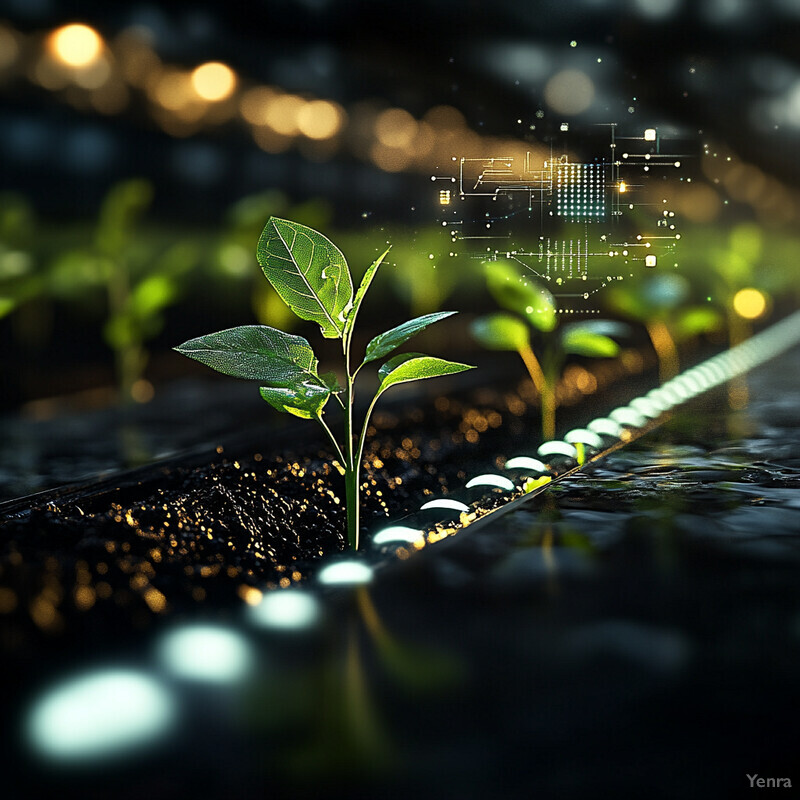
Studies confirm that AI with integrated sensor data improves efficiency. Oğuztürk et al. (2025) note that AI-driven irrigation “automates processes, reduce[s] human intervention, and minimize[s] water loss” compared to manual control. They report that AI-managed systems using sensor networks can significantly boost water use efficiency (WUE) and yields. In one case study, linking real-time plant and soil data into the irrigation controller yielded higher WUE and productivity than standard practices. These results indicate that fusing soil and plant sensors with AI models enables finer control. For example, an AI could learn that when subsoil moisture is above a threshold, watering can be deferred even if surface readings are low. By continuously analyzing sensor data, these systems achieve more uniform crop performance and conserve water without sacrificing yield.
5. Remote Sensing and Satellite Imagery Analysis
AI uses satellite and aerial imagery to detect crop water stress and guide irrigation over large areas. Multispectral and thermal sensors on satellites or drones capture indicators like vegetation indices (NDVI, SAVI) and canopy temperature. AI image-processing algorithms interpret these signals: for example, higher canopy heat suggests water stress, while low NDVI indicates poor vigor. The system correlates image data with ground conditions to map where irrigation is needed most. This overhead view covers entire fields, enabling zone-based irrigation. When integrated, a satellite alert can trigger targeted watering in specific zones. High-resolution imagery makes this approach scalable: it can serve single farms or whole regions. In practice, remote sensing helps spot stressed crops earlier than human observation, allowing preemptive irrigation.
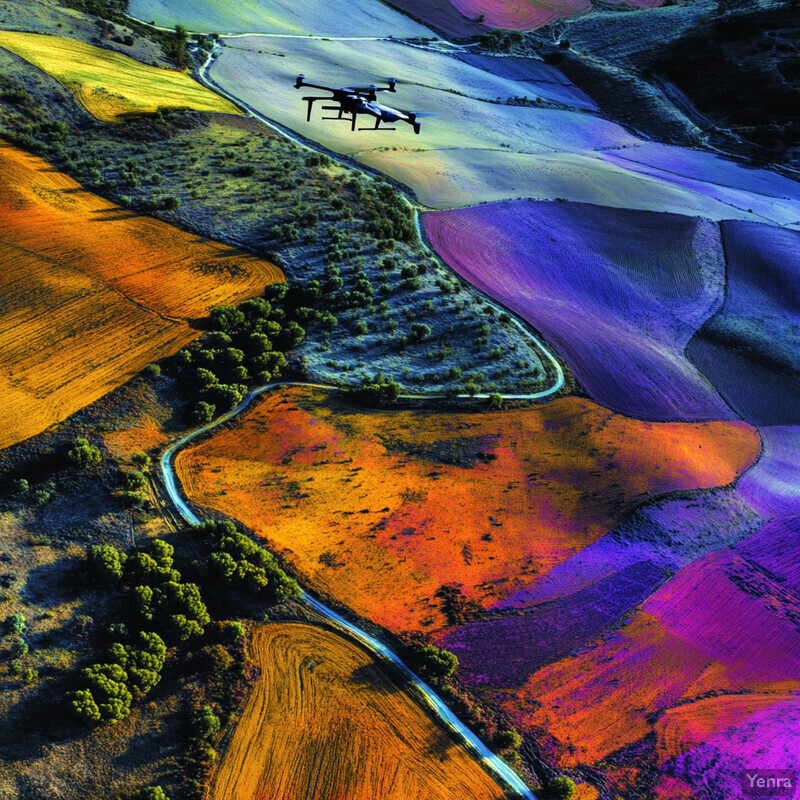
Remote sensing can provide timely irrigation cues. NASA’s IrriWatch project is a notable example: it uses thermal satellite data to compute evapotranspiration (ET) as a proxy for plant stress. According to NASA (2024), IrriWatch produces frequent ET maps, which serve as “an excellent indicator of plant health”. These thermal-based stress maps are delivered daily, helping farmers adjust irrigation before visible wilting occurs. Importantly, NASA notes that common NDVI-based models often “don’t register stress until it’s too late”. By contrast, thermal imagery can detect stress earlier. In field tests, such imaging-driven advisories have enabled water savings while maintaining yields. In sum, AI analyses of satellite/drone imagery (e.g. thermal IR and spectral indices) have been shown to reliably pinpoint drought stress zones, making remote sensing a powerful tool for precision irrigation planning.
6. Real-Time Optimization With IoT Connectivity
IoT connectivity transforms irrigation into a live, dynamic system. Wireless sensors send soil moisture, weather, and flow data to the cloud; actuators (valves, pumps) respond instantly to AI commands. With this setup, irrigation is constantly adjusted in real time rather than following a preset schedule. For example, if a sudden rainstorm occurs, the AI can immediately shut valves and prevent needless watering. If soil dries faster than expected, additional watering can be triggered on-the-fly. The IoT network ensures the AI model’s recommendations are enacted without delay. This continuous loop (sensor → decision → action → sensor) greatly increases responsiveness. Farmers interact via dashboards or mobile apps, but the core adjustments happen autonomously. Because the system can react instantly, it minimizes both water waste and risk of stress due to delays.
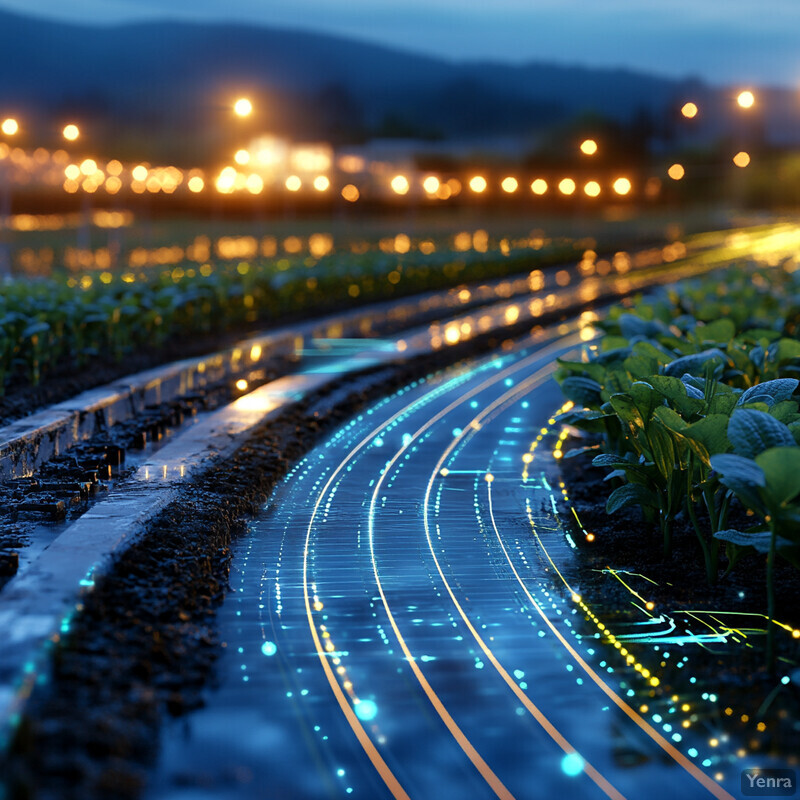
Field trials show dramatic benefits from IoT-enabled irrigation. For instance, Meriç et al. (2025) implemented a wireless IoT system for eggplant drip irrigation. The AI-integrated network raised yield by 12.05% and reduced water use by 35.2% compared to conventional ET-based scheduling. Another IoT system (using LoRa sensors) demonstrated real-time moisture monitoring with solar-powered nodes, which “optimized water use, reduce[d] operational costs, and improve[d] crop yields” in the field. These studies indicate that IoT connectivity allows more fine-grained control: water valves can open/close automatically per AI logic, preserving resources during unexpected conditions. The net effect is significantly improved resource allocation – higher yield per drop of water – confirming the value of real-time IoT-AI optimization.
7. Integration of Soil Physics and Hydraulic Models
Instead of treating irrigation purely as data-driven, some AI methods incorporate physical soil-water models for greater realism. For example, physics-based models (like Richards’ equation or energy balance models) describe how water moves through soil. AI systems can embed these principles (called “physics-informed” models) or use them to generate features. The hybrid approach may first simulate moisture using known physics and then use ML to correct discrepancies based on data. This integration improves long-term accuracy and ensures the model respects fundamental conservation laws. In practice, it helps when data are sparse or when extrapolating to new conditions (e.g. different soil types). By blending soil hydraulic theory with learning algorithms, these systems aim for both predictive power and physical interpretability.
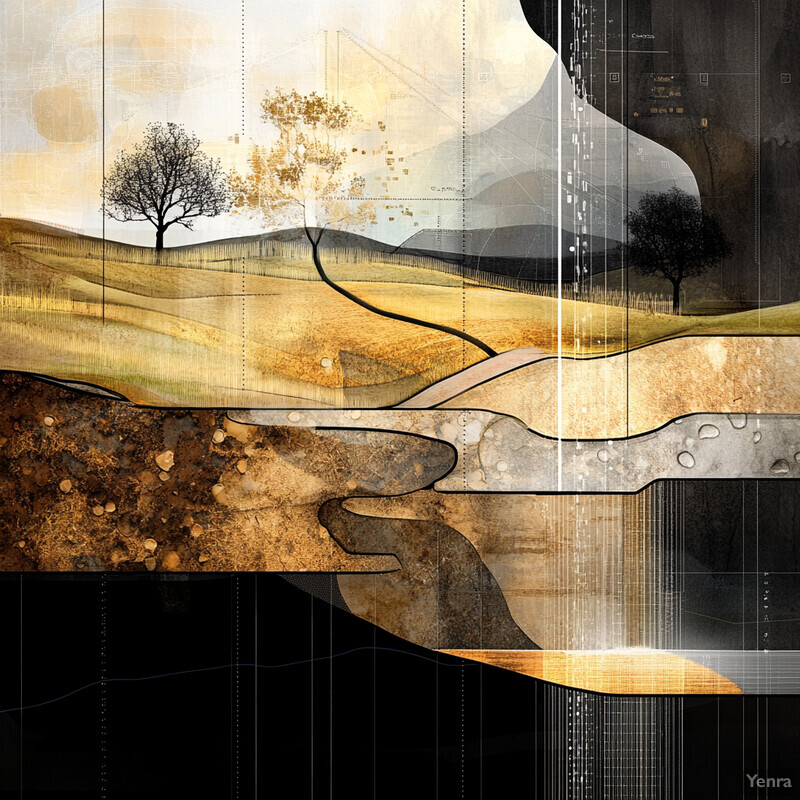
Bagheri et al. (2024) illustrate this strategy. They developed a “physics-informed” model combining a Markov-chain soil-water physics model with machine learning algorithms (SVM, random forest, neural nets) to predict soil moisture. Their results showed the hybrid model “outperforms current methods” that rely only on physics or purely data-driven models. In their tests on real soil moisture data, the physics-informed model gave significantly better predictions than either method alone. These gains indicate that coupling soil-hydraulic models with ML can reduce uncertainty: the physics component captures general dynamics, while the ML corrects the residual error. The study concludes that such integrated models greatly improve soil moisture forecasting, which is critical for reliable irrigation planning.
8. Decision Support Tools With User-Friendly Interfaces
AI-powered irrigation is delivered to farmers via decision support apps or dashboards. These tools display analytics and recommendations in an accessible way. For example, a mobile app might show soil moisture maps, weather forecasts, and an “irrigation suggestion” button. The interface can include charts of past irrigation and crop growth, or map layers of risk zones. The key is translating complex model outputs into simple actions: e.g. “Water Field A now for 20 minutes.” Good interfaces also allow farmers to input constraints (like water quotas) or to override AI suggestions. By visualizing data trends and predictions, these decision tools build user trust and enable human-AI collaboration. Ultimately, the interface is what farmers use daily, so it must provide clear guidance, historical reports, and warnings (e.g. drought alerts) generated by the AI back end.

Recent implementations show the effectiveness of integrated AI dashboards. For instance, Gaitan et al. (2025) describe a comprehensive irrigation system where real-time sensor data (temperature, humidity, moisture) feed into AI analytics, which then present predictive irrigation recommendations for each device and zone. Their system continuously aggregates this data, generating climate trend reports and risk maps at a national scale. The end result is a user-facing platform that provides actionable stats and suggestions (“dynamic irrigation suggestions”) instead of raw data. Farmers using this system receive tailored recommendations (e.g. “delay irrigation during peak heat hours”) through an interactive interface. The study demonstrates that linking AI models with a responsive UI can significantly aid decision-making: farmers get “suggestions and statistics to streamline the process” of irrigation, leading to better resource use.
9. Predicting Droughts and Water Scarcity Scenarios
AI aids in forecasting droughts by analyzing climate and hydrological data. Models ingest long-term records of rainfall, temperature, soil moisture, and water use to predict drought indices or reservoir levels months in advance. This enables proactive management of water allocations. For example, if AI predicts an upcoming drought season, irrigation managers can reduce crop area or schedule pre-season irrigation accordingly. AI can also simulate “what-if” scenarios under climate change: running many predictive models to quantify risk of water shortage. By providing probability-based drought forecasts, the system helps planners build resilience (e.g. diversify crops, conserve water) before a crisis hits. In practice, drought prediction tools integrate satellite data, climate models, and weather forecasts to flag emerging water stress at regional scales.
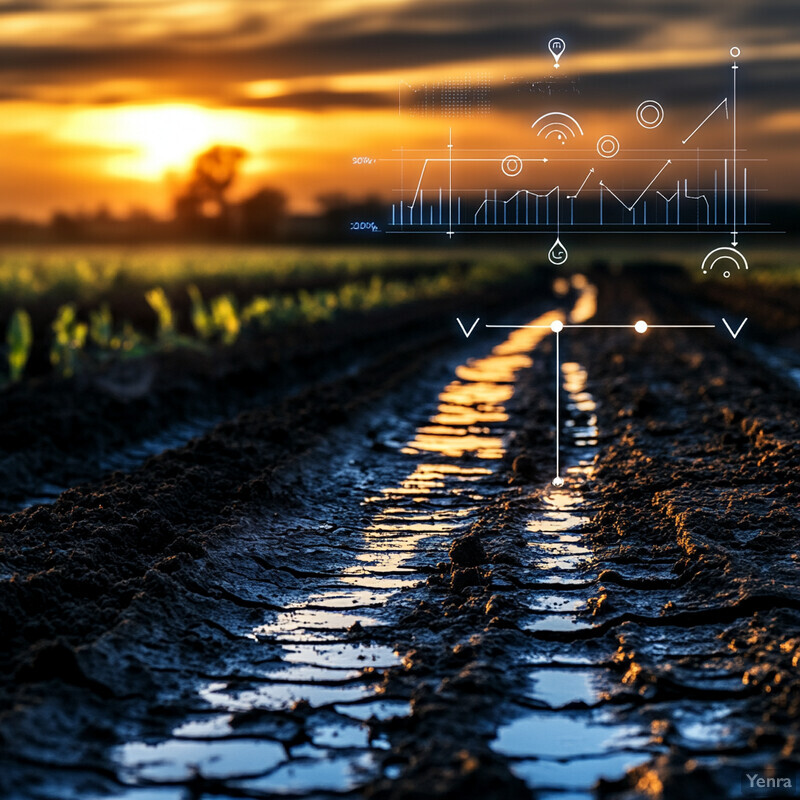
AI-driven drought forecasts have proven valuable. In one study of Vietnam’s Mekong Delta, Duong et al. (2024) applied neural networks to forecast a standardized drought index. They found that their AI models significantly improved early warning of dry conditions, facilitating better water allocation and risk mitigation. The authors emphasize that “accurate predictions” from AI are essential for adjusting to climate change and guiding sustainable water use. This aligns with broader findings: AI’s ability to simulate different climate scenarios allows managers to estimate when and where droughts will occur. For instance, by analyzing historical climate data, ML models can identify patterns preceding drought onset, effectively alerting authorities to save reserves. Such AI-enhanced forecasts lead to more informed irrigation plans during scarce-water scenarios.
10. Resource Allocation and Cost Savings
AI-based scheduling optimizes water and energy use, delivering cost savings. By precisely applying only the needed water, farms use less electricity for pumping and minimize waste. This can translate into reduced irrigation costs (fuel, power, labor). AI can also balance water delivery between competing fields or crops based on importance or crop value, ensuring limited water goes where it has greatest return. In scenarios with multiple fields, AI can sequence pumping and minimize peak power use. Because improved irrigation often raises yield per unit water, the value of extra crop can offset any setup costs. Over time, these efficiencies accumulate into substantial savings on water bills and operational expenses.
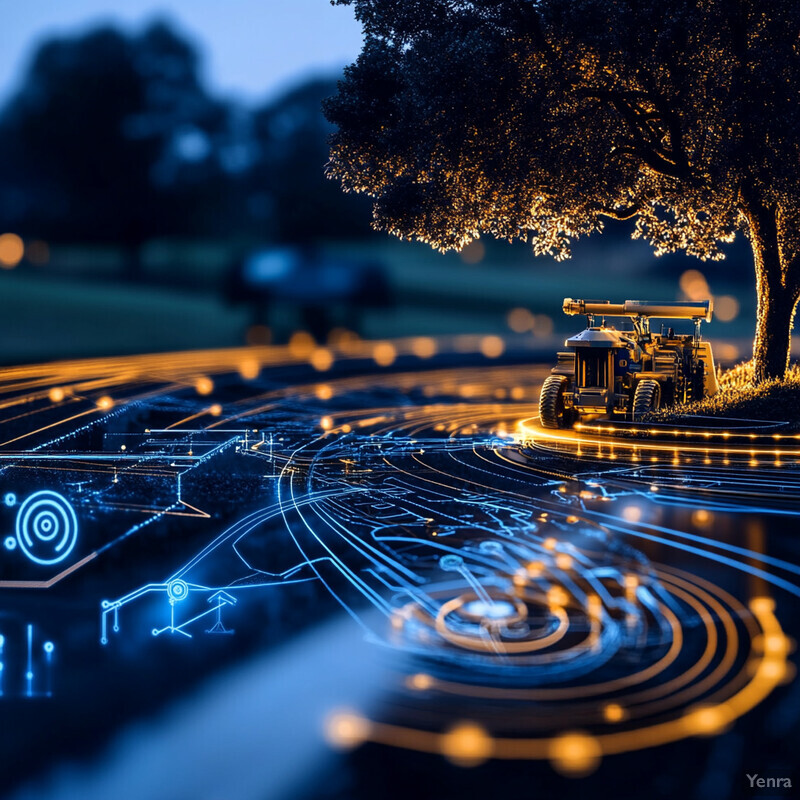
Empirical trials highlight these savings. As noted above, the IoT-enabled drip system by Meriç et al. achieved 35% water savings while boosting yield by 12%. This directly implies lower irrigation volumes and thus lower pumping costs. Another test system used solar-powered nodes and long-range radios; it was shown to “optimize water use, reduce operational costs, and improve crop yields”. In practical terms, a farmer reported significant reduction in pump run-time and fertilizer leaching after switching to the smart system. Overall, these studies suggest AI-driven irrigation can cut water use by tens of percent and similarly reduce energy costs, while increasing output, confirming a win–win in resource allocation.
11. Dynamic Threshold Adjustments for Trigger Points
Traditional irrigation often uses fixed moisture thresholds to trigger watering. AI enables dynamic thresholds that change with context. For example, the model might only irrigate when soil moisture falls below a certain level and it’s a cool part of the day. If weather forecasts predict rain, the threshold can be temporarily lowered to delay irrigation. Similarly, during a heatwave, the system might raise moisture thresholds to irrigate earlier. In other words, trigger points (like “start watering when VWC less than 30%”) become flexible rules learned from data. This ensures the system neither overreacts nor underreacts to momentary readings. In practice, AI can learn that letting moisture drop a bit during a rainy season has no harm, or that at high temperatures even 40% moisture is marginal. This adaptability prevents unnecessary irrigation cycles and better aligns watering with actual risk of stress.
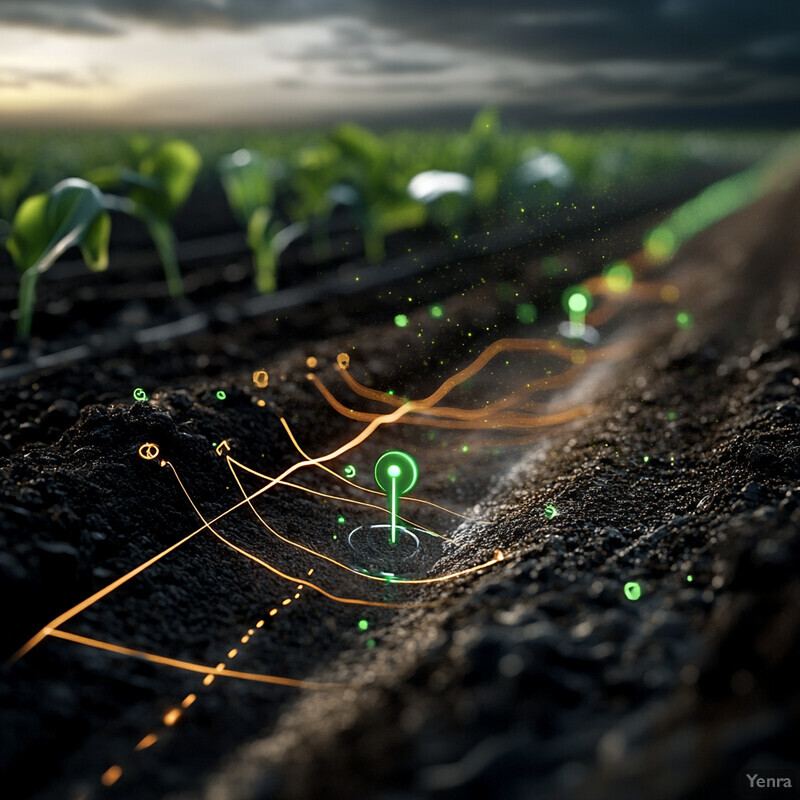
Gaitan et al. (2025) explicitly demonstrate adaptive thresholds in an AI irrigation system. Their models analyze both historical trends and live sensor data to make personalized recommendations. For instance, one rule they implemented was: “Delay irrigation during peak daylight hours (12:00–16:00) when soil moisture is below 40% due to high temperature,” ensuring water isn’t wasted under extreme heat. They also describe triggering irrigation only when moisture is below 40% during cooler hours, and delaying watering during forecast heatwaves. By contrast to rigid rules, this adaptive logic keeps plants safe while reducing excess irrigation. In field simulations, such dynamic thresholds yielded irrigation plans that were robust to uncertainty, maintaining optimal conditions without fixed timing. The cited study shows that AI can effectively redefine trigger points based on context.
12. Self-Learning From Historical Performance Data
Every irrigation event generates data (actual water applied, weather, yield outcomes). AI systems continuously learn from this historical data. They update their models each season by feeding in past results: if certain strategies consistently under- or overshoot moisture, the AI adjusts its predictions. Over multiple years, the model fine-tunes itself, improving accuracy in similar conditions. In essence, the AI “remembers” what worked (e.g. how yield responded to a given watering regime) and refines future recommendations. This makes the system adaptive to changes in soil condition, farm practices, or climate. The self-learning loop ensures that as long as data keep flowing in, the irrigation model evolves and its performance steadily improves.
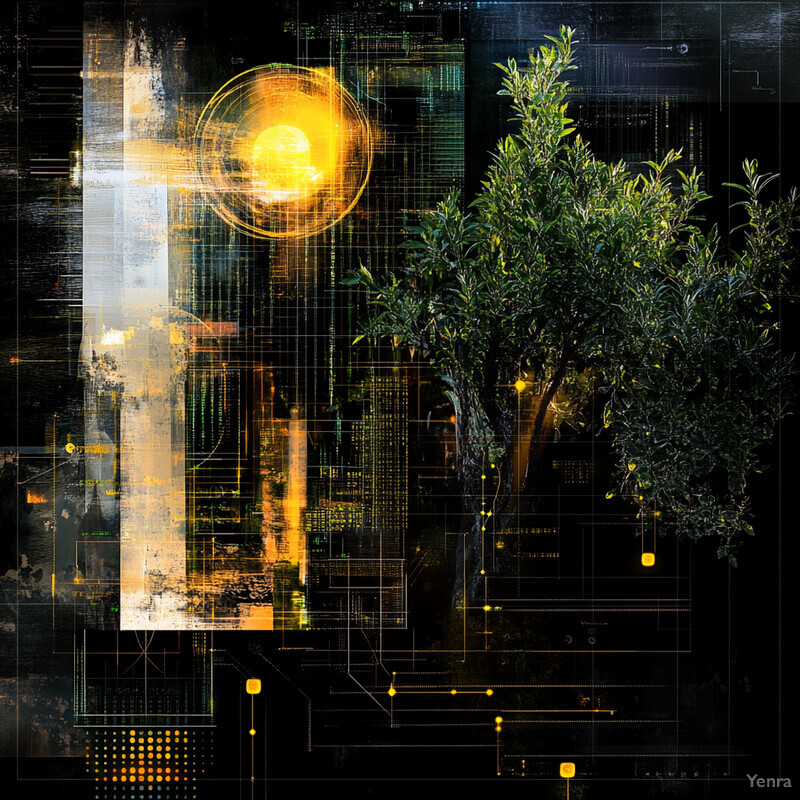
Gaitan et al. (2025) describe an AI system designed for continuous learning. They report that their platform "continuously aggregates soil moisture, temperature, and humidity data, alongside historical irrigation patterns and crop-specific requirements” to inform its predictions. In practice, this means the AI uses past irrigation schedules and outcomes to calibrate future scheduling. For example, if a certain zone regularly needed more water than predicted, the model learns to adjust the next recommendations upward. The study demonstrates that incorporating historical performance data (combined with real-time feedback) significantly enhances decision accuracy. Over time, such self-learning yields a stronger model that is better tuned to the farm’s unique conditions.
13. Continuous Improvement Through Open Data and Collaboration
Open data initiatives accelerate AI irrigation by sharing information. Large datasets of soil, climate, and irrigation patterns (often publicly available) help train and validate models. Collaboration among researchers, farmers, and agencies (through consortia or crowdsourced data) keeps models up-to-date with new findings. For example, shared repositories of weather forecasts or soil databases allow any AI system to quickly incorporate local context. Open-source platforms and APIs let developers improve scheduling algorithms together. This continuous feedback loop – where new field results are published and then used by others – ensures AI tools keep improving. Over time, the collective knowledge from various regions enhances the accuracy and applicability of irrigation models everywhere.

Efforts in open-data irrigation research are emerging. Notably, Radulović et al. (2025) released an open geospatial dataset of irrigated fields covering 2020–2024 for a region in Serbia. The dataset includes 1,256 field samples and is intended to help researchers develop more precise machine learning models across similar geographies. By publishing this data, they enable collaborative improvements; others can use it to train or refine irrigation algorithms. Similarly, global initiatives (e.g. NASA, USDA) provide open satellite and weather data that many AI systems already exploit. These shared resources ensure that as more users and researchers contribute data, the AI models continuously learn and improve.